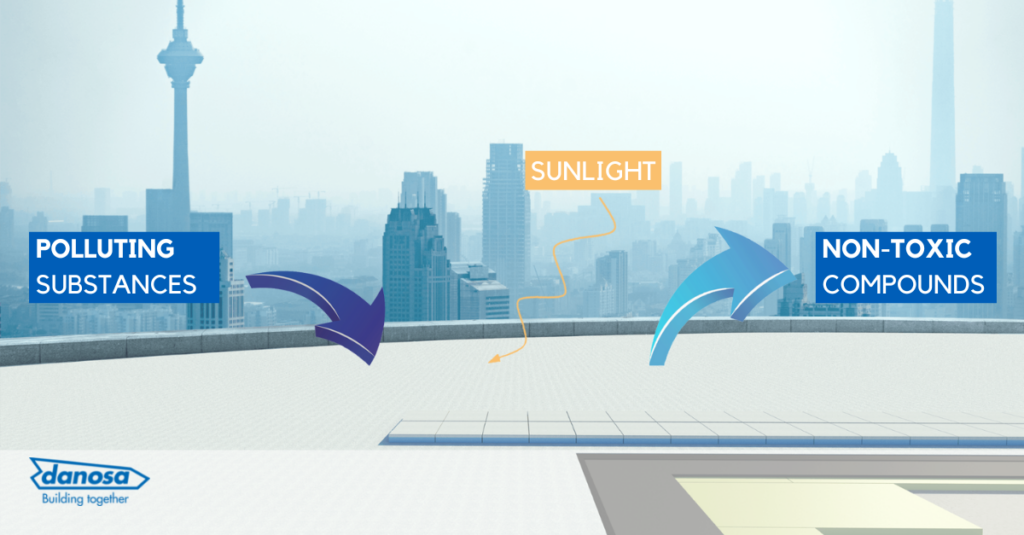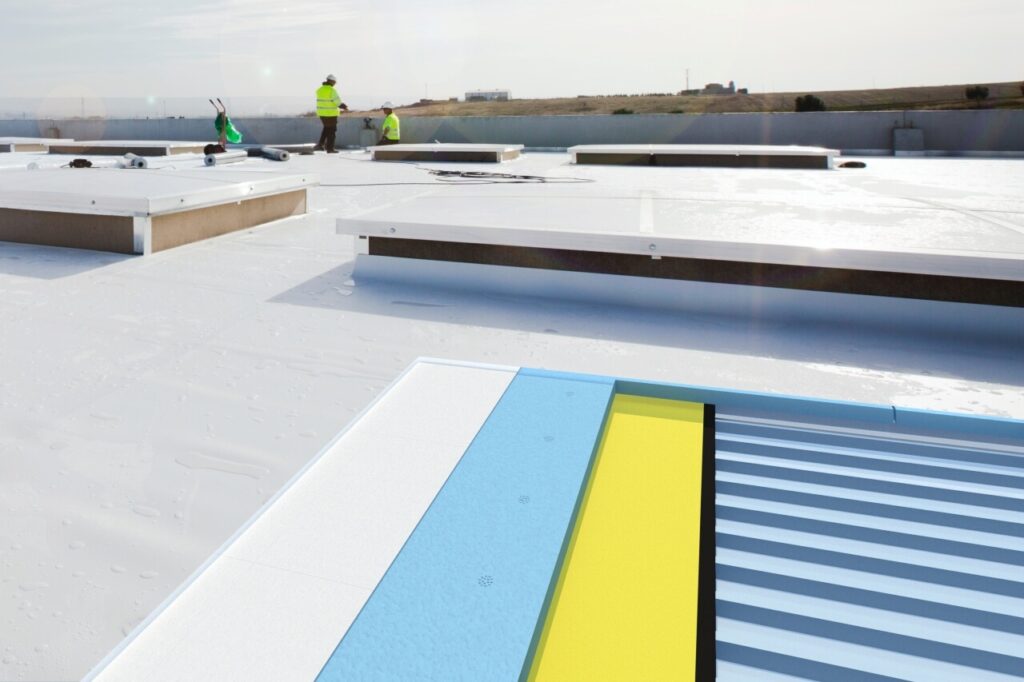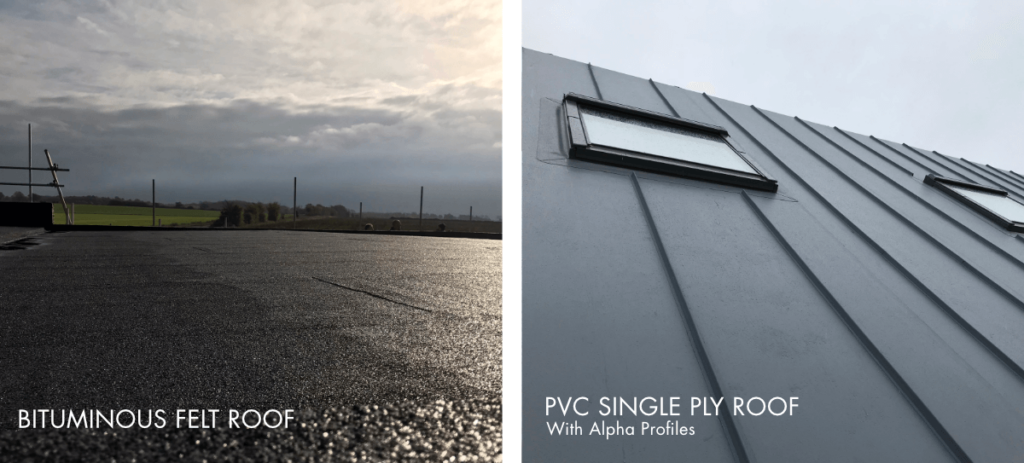When it comes to Single Ply flat roofs, there are two primary methods for installing PVC roofing systems: mechanically fixed and adhered. We have different products for both of these systems: DANOPOL HS for mechanical fixing and DANOPOL HSF for the fully-adhered solution. The choice between the two will depend on a range of factors, such as the size and design of the roof, the building’s purpose, and the climate of the area.
Mechanically fixed single ply roofing systems are attached to the roof deck using mechanical fasteners such as screws or plates. Perfect for lightweight structural deck constructions such as timber or profiled metal, mechanically fastened systems provides an economical, quick and versatile solution for most flat roofing applications throughout the year.
Adhered PVC roofing systems, on the other hand, are bonded directly to the roof deck using an adhesive. Every inch of a fully-adhered single ply roof is secured, without any gaps in between; this means that when it’s windy outside, the fully-adhered roof is less likely to lift.
When it comes to cost and labour efficiency, mechanically fixed systems are less expensive and quicker to install. This makes mechanically fastened systems a more likely choice for larger, commercial projects. Adhered systems a slightly more expensive and, as every inch of the roof is coated in the adhesive, take longer to install. However, aesthetically, fully-adhered systems create a seamless, smooth finish that enhances the appearance of the roof, making them a great choice for buildings where aesthetics are important; perhaps a residential garage roof or to waterproof a home extension.
It’s also important to consider the time of year that installation will take place. Mechanical fasteners work in the same way all year around, whereas adhesives work better in warmer temperatures. Warmer temperatures mean the adhesive is less viscous and and is easier for roofers to use. Warmer temperatures also mean a better curing time for the adhesive as chemical reactions, which are what cause the adhesive to cure, slow down in colder temperatures. Researching the temperature for the time of year you plan to install the roof may make a difference in the choice between a mechanically fixed or adhered system.
For energy efficiency, the fully-adhered system is a better choice. As the materials are completed adhered without gaps for air to pass through, the roof acts as an air barrier keeping the warm air inside in the winter, and out in the summer. Air can pass through layers of the mechanically fixed system, making it less efficient at separating outdoor and indoor air, so opting for the adhered system may help reduce heating costs in the winter and AC costs in the summer.
| Mechanically Fixed System | Adhered System | |
| Installation Cost | Less | More |
| Installation Time | Faster | Slower |
| Installation Temperature | Any | Warmer |
| Wind Uplift Resistance | Great | Superior |
| Energy Efficiency | Good | Superior |
| Durability | Good | Superior |
Combining the mechanically fastened and adhered systems actually creates a third solution for single ply roofing options. It is possible to adhere the insulation and vapour control layer to the deck using mechanical fasteners, and then adhering and welding the single ply on top. Combining the economical and speed benefits of a mechanically fastened system with the stronger resistance to wind uplift of an adhered system, a hybrid system is fast becoming the default specification option of choice.
Ultimately, the choice between a mechanically fixed, adhered, or hybrid system will come down to aesthetics, weather, cost and labour. Our team are always on hand to offer full specifications with windload calculations so if you’re not sure, speak to us on uksales@danosa.com or +44 (0) 845 074 0553.




